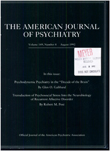Brainstem auditory evoked response and subcortical abnormalities in autism
Abstract
Previous studies of the neurobiology of autism that have used the brainstem auditory evoked response have given contradictory results. The authors of this study considered two supplementary aspects; they added an ipsilateral masking procedure, and they compared the results for every subject to the values (corrected for age and sex) of a large number of normal children. Twenty autistic (according to DSM-III-R criteria) and 13 mentally retarded (nonverbal IQ less than 75) subjects were assessed. Eighty percent of the autistic subjects had abnormal interpeak latencies, compared to 15% of the mentally retarded subjects. The I-V and III-V prolonged interpeak latency values were seen only in the autistic subjects. The ipsilateral masking procedure doubled the rate of detection of higher-brainstem abnormalities in the autistic children.
Access content
To read the fulltext, please use one of the options below to sign in or purchase access.- Personal login
- Institutional Login
- Sign in via OpenAthens
- Register for access
-
Please login/register if you wish to pair your device and check access availability.
Not a subscriber?
PsychiatryOnline subscription options offer access to the DSM-5 library, books, journals, CME, and patient resources. This all-in-one virtual library provides psychiatrists and mental health professionals with key resources for diagnosis, treatment, research, and professional development.
Need more help? PsychiatryOnline Customer Service may be reached by emailing [email protected] or by calling 800-368-5777 (in the U.S.) or 703-907-7322 (outside the U.S.).



